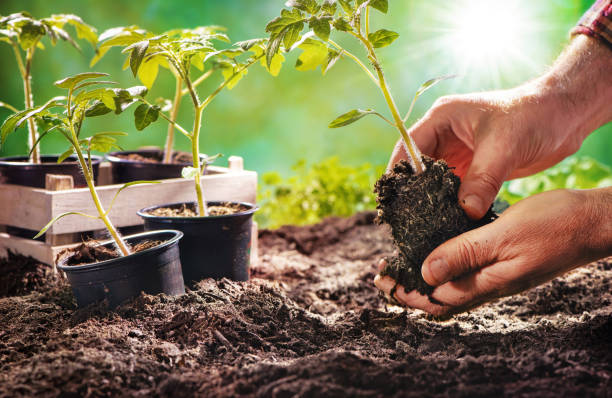Garden preparation is the cornerstone of a fruitful and vibrant gardening season, offering the groundwork for healthy plants and a flourishing landscape. From soil enrichment to strategic planning, mastering the art of garden preparation ensures a bountiful harvest and a visually stunning outdoor haven.
Preparing for the gardening season offers many benefits beyond the immediate joy of seeing colorful blooms or harvesting fresh produce. One key advantage is the promotion of plant health and vigor. Taking the time to assess and improve the soil quality ensures that your plants receive the essential nutrients they need to thrive. Amending the soil with organic matter enhances its structure and water retention capabilities, providing a fertile foundation for robust root development. By addressing potential issues before planting, such as poor drainage or nutrient deficiencies, you set the stage for healthier plants more resilient to pests and diseases throughout the growing season.

Furthermore, planning and organizing your garden layout contribute to efficient space utilization and enhanced aesthetic appeal. Careful consideration of plant compatibility and growth habits helps prevent overcrowding, reducing competition for sunlight, nutrients, and water. Thoughtful design choices, such as creating themed beds or incorporating companion planting techniques, maximize available space and contribute to a harmonious and visually pleasing garden. The result is a well-organized and balanced landscape that provides a tranquil and enjoyable environment for the gardener and visitors.
In addition to the tangible benefits for plants and aesthetics, preparing for the gardening season fosters a sense of connection with nature and the changing seasons. Engaging in planning and anticipating a new growing cycle creates a unique bond with the earth and its natural rhythms. This connection is fulfilling on a personal level and encourages mindfulness and a greater appreciation for the intricate processes that govern plant life. As you prepare your garden, you participate actively in the growth cycle, sowing the seeds of a rewarding and fulfilling gardening experience.

Here are some essential tips and tasks to help you get ready for the upcoming growing season:
1.) Assess Your Garden Space
Before you dive into planting:
- Take some time to assess your garden space.
- Evaluate the layout, soil quality, and any existing plants or structures.
- Consider factors such as sunlight exposure, drainage, and hazards like overhanging branches or invasive weeds. This assessment will help you decide what to plant and where.
2.) Plan Your Garden Layout
Once you clearly understand your garden space, it’s time to plan your layout. Decide which plants you want to grow and where they will thrive best in your garden. Consider plant size, growth habits, and compatibility with neighboring species. Consider creating themed beds or incorporating companion planting techniques to maximize space and promote biodiversity.
3.) Prepare the Soil
Healthy soil is the foundation of a successful garden. Start by testing your soil pH and nutrient levels to determine its composition and fertility. Amend the soil as needed by incorporating organic matter such as compost, manure, or peat moss to improve its structure and nutrient content. Work the amendments into the soil thoroughly to ensure even distribution and proper aeration.

4.) Clean Up and Maintenance
Clear away the previous season’s debris, weeds, or dead plant material. Prune back overgrown shrubs and trees, and remove damaged or diseased branches. This improves the overall appearance of your garden and helps prevent the spread of pests and diseases. Take the time to inspect garden tools and equipment, sharpening blades and replacing worn-out parts as necessary.
5.) Start Seeds Indoors
Starting seeds indoors can give certain plants a head start and extend the growing season. Research the optimal timing for starting seeds based on your local climate and the specific requirements of each plant. Use seed trays or containers filled with a high-quality seed starting mix, and provide adequate warmth, moisture, and light to promote healthy seedling development.

6.) Plan for Pest and Disease Management
Prevention is often the best defense against pests and diseases in the garden. Implement crop rotation, interplanting with pest-repellent species, and using physical barriers like row covers to deter unwanted visitors. Familiarize yourself with common garden pests and diseases in your area, and be prepared to take prompt action at the first sign of trouble.
7.) Invest in Essential Tools and Supplies
Ensure you have all the necessary tools and supplies for the upcoming gardening season. This includes basics like trowels, pruners, watering cans, gloves, and any specialized equipment needed for specific tasks or plants. Stock up on fertilizers, mulch, and other amendments to support healthy plant growth throughout the season.

8.) Stay Informed and Inspired
Gardening is a continual learning process, so stay curious and open to new ideas and techniques. Use resources like gardening books, websites, and community workshops to expand your knowledge and skills. Connect with fellow gardeners to exchange tips, share experiences, and draw inspiration from each other’s successes and challenges.
Conclusion
As the days grow longer and the earth awakens from winter slumber, now is the perfect time to prepare for the gardening season ahead. By assessing your garden space, planning your layout, and preparing the soil, you’ll set the stage for a flourishing and productive garden. Remember to stay vigilant against pests and diseases and stock up on essential tools and supplies. With careful planning and attention to detail, you’ll be on your way to a season of bountiful harvests and vibrant blooms. Happy gardening!
